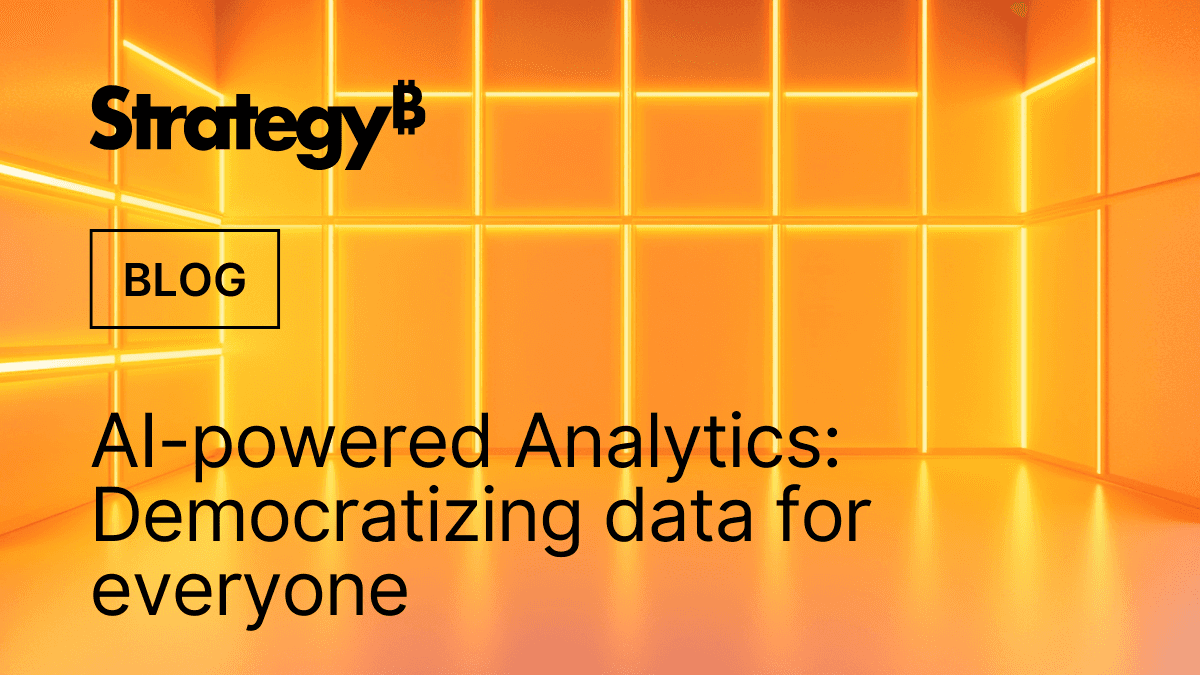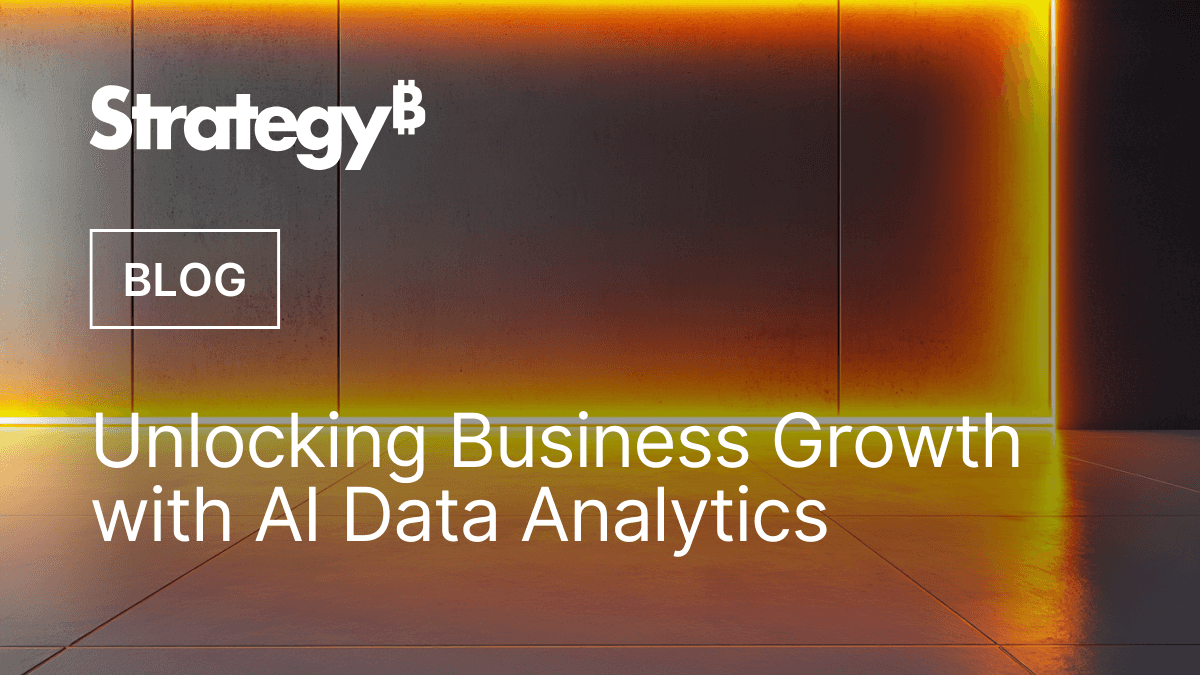Why a Mature Data Fabric Is Critical for AI Deployment in Legacy Systems
AI offers major opportunities for innovation and operational efficiency—but it all depends on one thing: data readiness. Many organizations want to scale AI but face major roadblocks in the form of outdated systems and fragmented data environments. That’s where a mature data fabric becomes essential.
AI Needs Data Readiness—Legacy Systems Get in the Way
The success of AI hinges on high-quality data. That means accurate, accessible, well-governed data from across the enterprise. However, most companies still rely on siloed legacy systems that weren’t built for real-time processing or scalable integration. Without a modern data strategy, these systems hold back AI adoption.
Disparate sources, inconsistent standards, and outdated formats make it difficult to unify and prepare data for AI models. The result? Inaccurate insights, poor model performance, and stalled AI initiatives.
Organizations Are Making the Right Investments
However, there’s good news. Companies understand the challenge—and they’re investing in solutions to tackle. 94% of organizations plan to increase spending on data readiness in the next year, according to ESG/TechTarget. These investments are happening in parallel with AI initiatives, because businesses are recognizing this key connection: AI only delivers ROI when it’s fueled by reliable, secure, and relevant data.
What a Mature Data Fabric Delivers
A mature data fabric solves the legacy problem by:
Unifying structured and unstructured data across systems
Abstracting complexity without re-platforming
Providing secure, policy-based access
Delivering real-time data for dynamic model training and analytics
Ensuring semantic consistency across legacy and modern architectures
This isn’t just about integration—it’s about building trust, transparency, and agility into your entire data ecosystem.
Building Trust with Explainability and Lineage
To fully embrace AI, users need to first learn to trust it. That means understanding where insights come from and how data-backed decisions are made. A mature data fabric provides built-in explainability and data lineage, so users and regulators alike can trace outputs to their sources.

The Strategy Semantic Graph: Data Fabric, Evolved
Strategy’s Semantic Graph goes beyond standard data fabric capabilities. It provides:
Reusable data objects for rapid development and consistency
Inheritable updates to automatically synchronize business logic
Granular, role-based features for enhanced privacy and governance
Rich metadata that powers discovery, integration, and explainability
Platform-agnostic scalability to support hybrid, cloud, and on-prem environments
Built for AI, the Semantic Graph gives organizations a single source of truth—and the flexibility to innovate without compromise.
Your Data. Supercharged in 30 Days.
Start your free trial of Strategy One Standard—where AI meets BI to deliver fast, secure, enterprise-ready insights.
The Bottom Line
A mature data fabric isn’t optional—it’s the foundation for successful AI. And the momentum is clear: organizations are investing heavily in data readiness to ensure their AI strategies succeed. Strategy helps close the gap between fragmented legacy systems and AI-driven innovation with a semantic-first approach built for scale, trust, and speed.
Want to go deeper?
Download the whitepaper: Bridging the Data Gap for AI Readiness to explore how a mature data fabric powers scalable, secure AI—and how Strategy helps you get there faster.

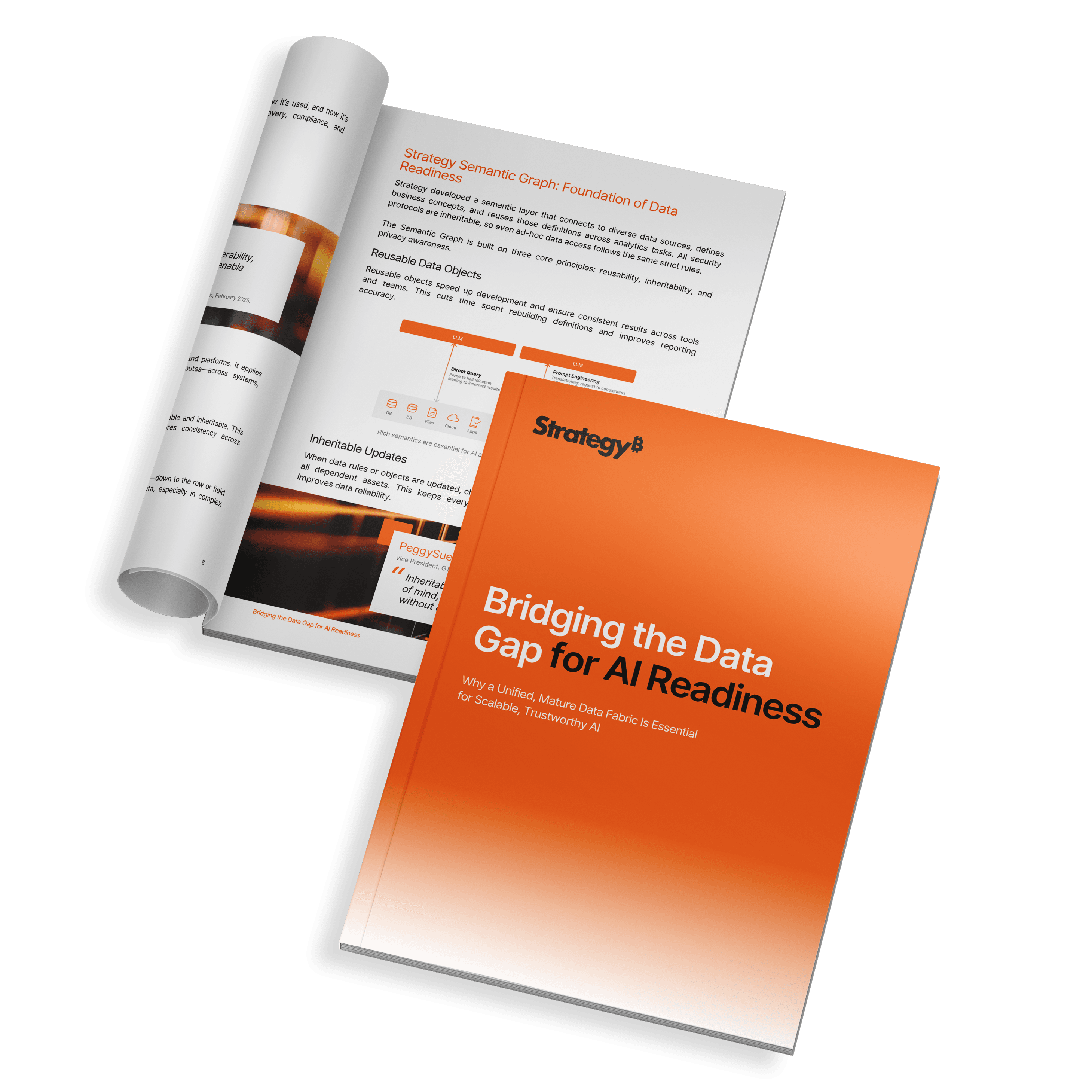
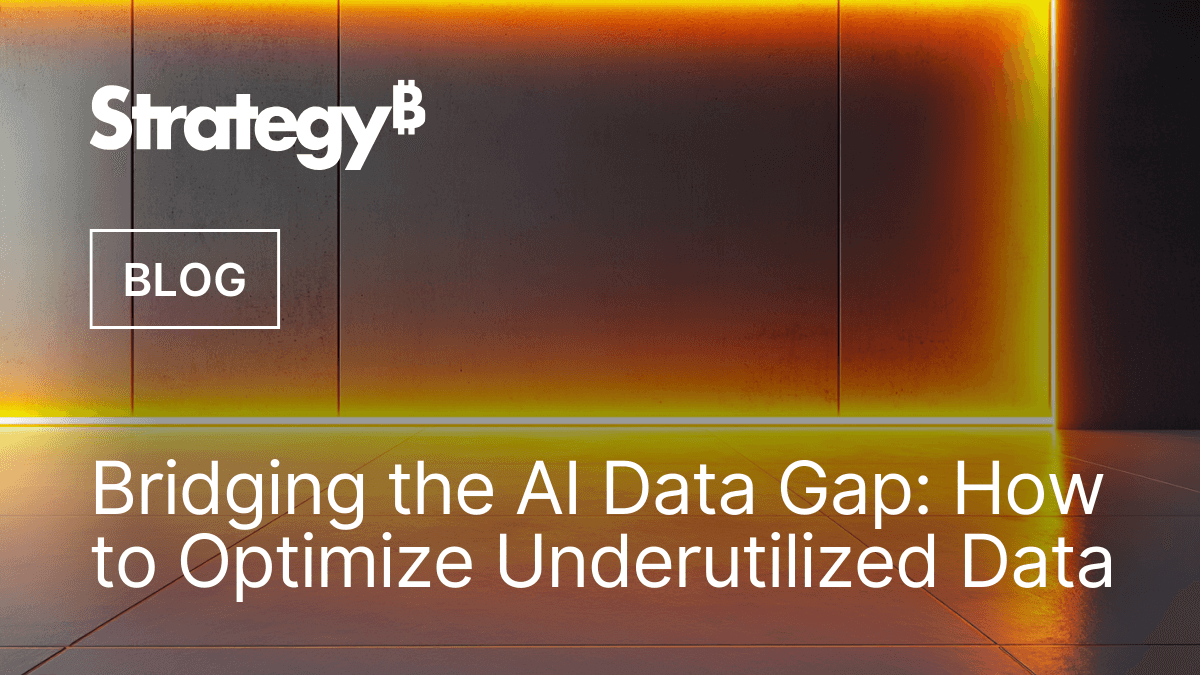
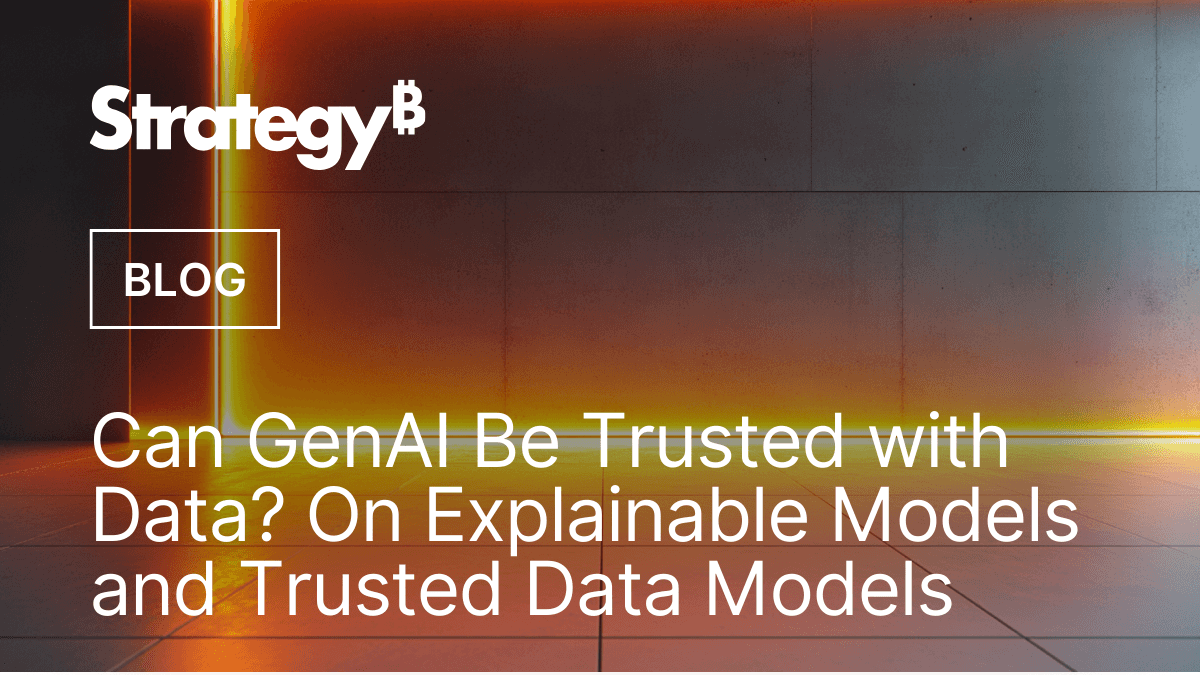
.png&w=750&q=75)
